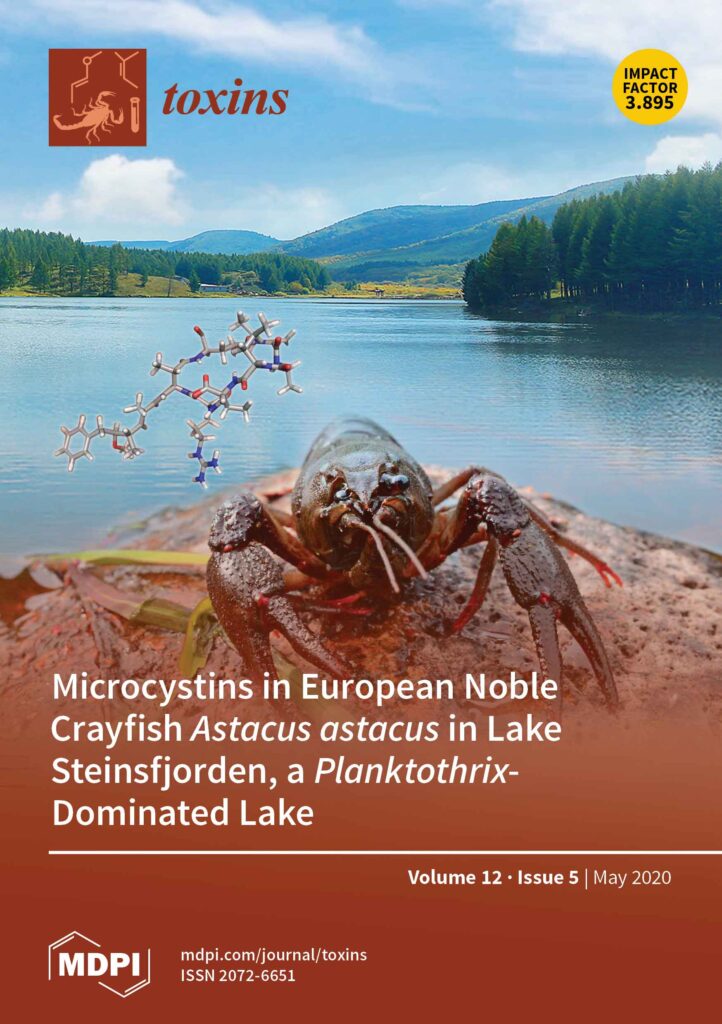Noble crayfish study from Lake Steinsfjorden on Toxins cover
A new study from Lake Steinsfjorden, investigate presence of microcystins in crayfish in summer 2015 and 2016, after a large bloom of Planktothrix over the winter 2014-2015. The study is presented on the cover of the May issue of the international journal “Toxins”.
Beautiful Lake Steinsfjorden has one of Norway’s finest populations of noble crayfish. This lake alone accounts for 25-30% of the annual catch of noble crayfish in Norway. This lake also experience frequent blooms of cyanobacteria, such as Planktothrix spp., which produce toxins such as microcystins that can cause liver damage.
Research questions were; is there a relationship between microcystins in the water and in the crayfish? Would the noble crayfish be affected by these microcystins? Moreover, is there a cause for concern about food safety for human consumers of noble crayfish?
The study included analyses of crayfish from the Planktothrix bloom in Steinsfjorden 2015, and the following year. Large amounts of microcystins were found in the stomach, intestine and hepatopancreas (the “liver” of the crayfish), while the tail meat contained low levels of microcystins.
The so-called edible parts (tail muscle plus encapsulated intestine) contained low levels of MCs, just above the WHO tolerably daily intake (TDI) in September 2015. Removing the intestine from the tail reduced the MC content of the edible parts by 2–4-fold, to well below the TDI.
Stomach samples were tested markers for Planktothrix spp. and 8 out of 10 tested samples contained such markers, showing the cyanobacterium to be part of the noble crayfish diet. The noble crayfish population in Lake Steinsfjorden has been monitored for years, and there was not seen any unusual mortalities of noble crayfish this year, suggesting a high tolerance to MCs. Other studies has also suggested that freshwater crayfish have a high tolerance for microcystins.
Read the paper here.
